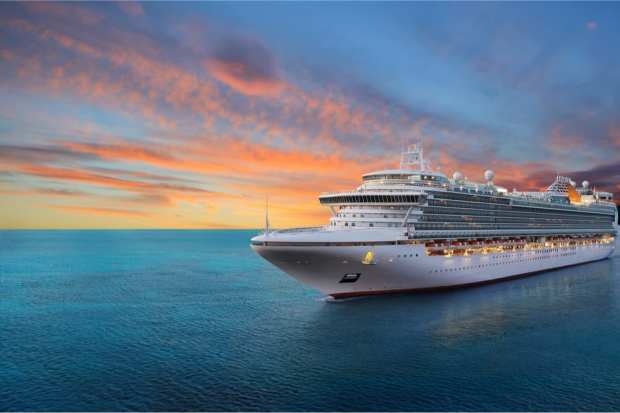Will Consumers Be Ready To Set Sail With The Cruise Industry Anytime Soon?

While few industries haven’t been hit hard in some way by the global pandemic and the economic slowdown it has carried in its wake, the cruise industry has seen its fortunes uniquely sunk by COVID-19’s effects on the travel industry. Cruise ships had the unfortunate status of being the site of several early outbreaks, replete with tales of travelers marooned at sea and stuck in their staterooms. Cruise officials worked overtime to stop the contagion from spreading among passengers, but public confidence in the industry suffered before boats were docked and sailings were canceled to stop the spread of the virus.
And now the question is floating to the surface: given the rough seas the cruise industry has faced so far, when will ships be back on the high seas with consumers onboard and ready to get indulge in buffets and on-deck dance parties? The data from several sources indicates we might be waiting on dry land for a while.
The official “no sale” deadline by the Centers for Disease Control and Prevention (CDC) is officially set to expire on July 24, but thus far many major cruise companies, including Norwegian, Royal Caribbean, MSC and Carnival, have extended their sailing suspensions just past that date. And this week, the first steps by major players to push out well past that calendar date began to surface. Disney Cruise Line and British luxury line Cunard, a subsidiary of Carnival, have both announced drastic delays to their starting dates. Disney won’t be sailing again until October at the earliest, and Cunard has canceled all sailings due to depart up to and including Nov. 1 for the three ships in its fleet.
“With many differing restrictions across countries, people’s ability to move freely and safely across borders remains seemingly some way in the distance,” Simon Palethorpe, president of Cunard, said in a statement shared by Carnival Corp. spokesperson Roger Frizzell. “We also need to better understand the implications Covid-19 will have on board our ships.”
Cunard went on to note that it will only set its boats to sail again when it has a “comprehensive restart protocol” with approval and accreditation from authorities. Palethorpe also noted the cruise line is working with the CDC, Public Health England, trade group Cruise Lines International Association as it attempts to condition “every aspect of the cruise experience” around safety and comfort for guests.
Cunard is joined by Carnival subsidiary P&O Cruises, which will be docked until Oct. 15, following a Canadian ban on cruises and ferries carrying 100 or more passengers with overnight capacity through the last day of October. Germany’s AIDA Cruises canceled all remaining 2020 sailings with port stops in Canada and the U.S.
And even lines like MSC and Royal Caribbean, which still have July restarts on the books, are limiting some of their sailing restarts, particularly those originating in New York, and pausing until the fall. Royal Caribbean also announced it would cancel sailings to Alaska, Canada and New England through October.
And even if the sailings are restarting, will consumers be ready to jump aboard?
According to PYMNTS’ most recent consumer surveys, the data there is shaky at best. On the upside, when consumers list their reasons for wanting to get back out and about in the world again, international travel is making the list. But it isn’t that high on the list. Of all the reasons consumers list for wanting to get back out there, only 19.9 percent on average name international travel — though that number does go up to over 25 percent (26.2 percent to be exact) among consumers who have had their office lives relocated to their homes. Still that drastically trails domestic travel (50 percent), eating in restaurants (68.5 percent) and shopping in stores (50.1 percent) pretty dramatically. There is interest in getting back out there, but cruise ships are massive, often compared to floating cities, and the industry will need more than die-hard sailing celebrants to get back to profitability. And that means they will need stronger interest in the kind of international sea travel they represent than PYMNTS’ figures are currently reflecting.
Which, perhaps, is why we are seeing the sailing delays well beyond the CDC stop date starting to pile up this week — and why we shouldn’t be surprised to see more sailing go on hold as the end of July 2020 grows closer. Because as PYMNTS data demonstrates, consumers believe the pandemic is here for the long haul. And given the close quarters common to cruise ships and the near impossibility of meaningfully social distancing in a floating metropolis where people go to meet and mingle, it seems that sailing away could be on hold for quite some time — perhaps even until a vaccine is in wide circulation.
